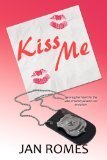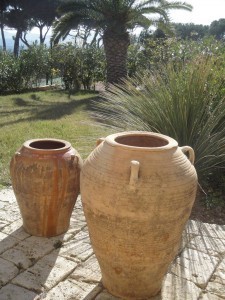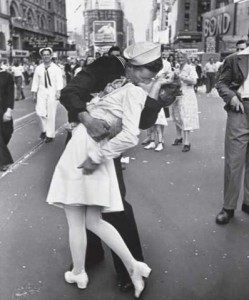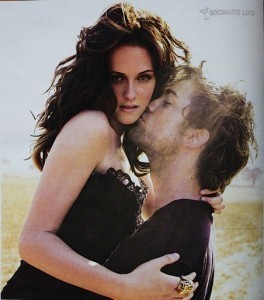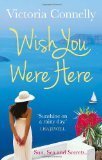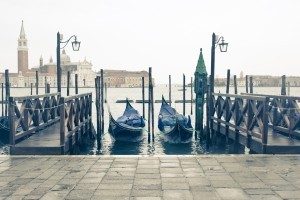Hannah Fielding's Blog, page 126
July 23, 2013
A touch of otherworldliness in romance
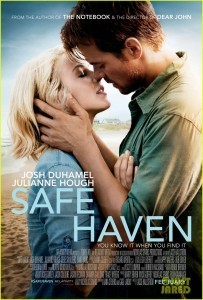 Recently I watched a lovely romance movie called Save Haven, based on the book by bestselling romance author Nicholas Sparks. Without wishing to give away the plot, the ending of the story had a heart-warming twist that called for a belief in something beyond stark, cold reality.
Recently I watched a lovely romance movie called Save Haven, based on the book by bestselling romance author Nicholas Sparks. Without wishing to give away the plot, the ending of the story had a heart-warming twist that called for a belief in something beyond stark, cold reality.
I love romance stories, of course, but I don’t generally seek out those that are paranormal in nature. I’m not one for reading a love story involving vampires, for example. Yet just a touch of otherworldliness handled sensitively can really add appeal to a love story, I think – more sentiment, more mystery, more depth, more of a take-away meaning from the book.
In my own stories, I like to explore a touch of mystical rooted with culture. In Burning Embers, for example, superstition is rife and a witch doctor is keen to give Coral warnings. In a book I wrote set in Spain, I explore the culture of the gypsies and fortune tellers. And in my upcoming book, The Echoes of Love, set in Italy, I include the character Qiqiang Ping Lü, a Chinese fortune teller, whose wisdom is instrumental in the protagonist’s search for the truth.
I very much enjoy bringing an element of fate into my writing – begging that question of whether lovers are destined to be together. But I am always careful to leave interpretation up to the reader. If the reader so chooses, otherworldliness perhaps exists in the tapestry of my story. But equally, if the reader so chooses, the story is pure reality, with no hint of the beyond: just two people falling in love, and the opinions of those around them on the matter.
For me, when you write a love story focused on two lovers, two souls united in mutual love and reverence, there is magic enough in the moments they are together. Their love creates its own level of transcendence. And what I like best about seeing magic in that way is that it is attainable to us all. My readers could not fall in love with a vampire or a werewolf or a zombie or a ghost, but they could fall in love with a man in the way that I write. And I hope that, on some level, my writing can inspire readers to believe that – to believe in true love that’s earned without any magic wand.
July 21, 2013
The pros and cons of using a pen name
Readers, writers, publishers – the book world has been in uproar this week following the revelation that a recently published crime novel by ‘Robert Galbraith’ was in fact by the world’s most famous author: JK Rowling. Rowling was exposed by the Sunday Times, which had commissioned Professor Peter Millican of Hertford College, University of Oxford, to compare a range of writing samples to hunt for marked similarities between the novel in question, The Cuckoo’s Calling, and Rowling’s other works, Harry Potter and The Casual Vacancy.
Rowling is quoted by the BBC as saying she had ‘hoped to keep this secret a little longer’ and that he ‘being Robert Galbraith’ was ‘such a liberating experience’. No doubt she expected to be ousted at some point (in a 2001 interview she admitted as much; see www.bbc.co.uk/news/entertainment-arts-23304181). But I wonder how much she wishes she could have continued writing quietly under the pen name, and enjoyed her writing without the world holding up each and every word for scrutiny.
I think we can all understand why JK Rowling chose to use a pen name. The advantage of doing so is powerful: total anonymity allows you to write what you want, how you want, when you want:
What: Under a pen name, you can explore a range of genres. Just because you’ve always written romance doesn’t mean that’s all you can write. Just as a reader enjoys more than one genre of book, so a writer enjoys writing different kinds of stories.
How: As a writer, you can toy with your writing style, experiment with a new voice, try out a different kind of structuring.
When: Many authors, such as the romance and teen writer Meg Cabot and the thriller writer Dean Koontz, admit to using pen names to give them freedom to be prolific. There’s a certain snobbishness in some critics that authors should spend years over a work, and yet many authors can decent write books much faster than this.
In addition, for many writers a pen name is a means of creating an author identity – a brand, if you like, for marketing. If your name is Marmaduke Dull, for example, and you write erotic fiction, you may prefer to publish your books under a more current, edgy name. Or, indeed, conceal your gender – it’s telling indeed that JK Rowling (already writing under initials to make her female gender less obvious) chose a male pen name to appeal in what is seen by many as a male-centric genre.
But what of the pitfalls of pen names? Well, it really depends how open you are about the pen name. If you’re open – Stephen King, for example, is known to write as Richard Bachman – then life is quite straightforward. You just have to remember not to muddle who you are in delicate situations; so you don’t email a fan using your real, not pen, name. But if, like JK Rowling, you’d really like your actual identity to remain hidden, that can make your work as an author a little harder.
First, you have to separate strictly all real-you media and pen-name-you media. It’s no good using the same headshot on your personal Twitter page, for example, as you do on your pen name one. You need to do your best to make sure that to the outside world, these people look entirely separate (and yes, that means no posting reviews of your own book in your personal Amazon account, as some authors have been discovered doing!).
But the real concern is marketability. Authors today have to market extensively, so your author name becomes a sort of brand that you build up over time. If your personal life really doesn’t relate to your writing then separating the two by using a pen name is simple. But sometimes using a pen name comes at a cost to marketing. Say, for example, you’re a high-flying member of the police force and you’ve written a crime novel. To publish under a pen name and make no reference to your extensive and impressive experience of crime is, in marketing terms, missing the boat.
Of course, JK Rowling publishing under Robert Galbraith was most definitely missing a marketing trick. She sold 1,500 copies of the book before the news of her authorship broke; I can only imagine how those sales have soared since. Perhaps she – or her publisher – always intended the news to come out. Or perhaps Rowling was quite happy not to push for success in commercial terms with this book.
Whatever the truth, it has been interesting to watch talk of pen names flood the media, and I think the story that has most stood out is that JK Rowling’s pseudonymous book was rejected by publishing house Orion (which is no doubt regretting that now). It just goes to show that even the best, more respected, most highly paid writers in the business aren’t necessarily guaranteed success on talent alone when you strip away that all-important brand.
July 19, 2013
Book review: Kiss Me by Jan Romes
From the blurb:
Running late for her spoiled stepsister’s bachelorette party, Lacy Goodlow is forced to speed—snagging a hefty traffic ticket and the interest of Officer Jared Kelly. Their paths collide again in the middle of the bachelorette party when Lacy plays an embarrassing game of Fact or Fun and she hands him a napkin that simply says Kiss Me. A full-blown attraction takes off, but so does conflict once it’s revealed that Jared and Lacy’s stepsister, Angela, had a tumultuous fling and she still claims territorial rights.
A thoroughly enjoyable witty contemporary romance. Having read Jan’s books before, I knew I was in for a fun, passionate read, and this book did not disappoint.
I love Jan’s lively writing style; for example:
She looked dejected and something stirred deep inside of him. He shook his head. She stood no chance of rescue since she was related to trouble-with-two-legs. The reminder made him swing back to the ballgame so fast he should’ve suffered whiplash.
And:
Her sister had gone for gold this time and was probably off somewhere hugging her medal.
I often found myself smiling or laughing as I read.
I really enjoyed the storyline, which is a perfect blend of emotional and cheeky, and I was most swept away by the romance and passion between Jared and Lacy. Angela and her mother are the perfect villains who throw up all the conflicts in the book, and I was rooting for Lacy to roll her sleeves up and deliver some justice there. I also loved the secondary character of the father and Lacy’s feisty aunt Grace, and all the exploration of how difficult families can affect a relationship.
For me, the ending was perfect – just what I’d hoped for. A suggested twist was not acted on, and I liked that: nothing like keeping readers on their toes!
In all, a great summer romance; one to devour in a day ensconced in a shady spot with a cool drink.
Kiss Me is available now from Amazon; click on the book cover below to visit the store.
July 18, 2013
A classic Provencal sight
July 16, 2013
Aphrodisiac recipe: Beetroot and chocolate brownies
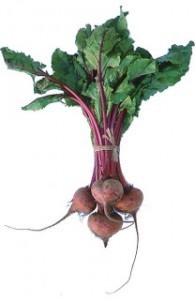 Recently, I watched an episode of Come Dine With Me, a British cookery challenge show, and I was most interested by one of the cooks, a beetroot (beet) farmer, who created a full dinner-party menu incorporating beetroot into each dish! What was most interesting was his explanation that beetroot is in fact an aphrodisiac, which came as a surprise to me.
Recently, I watched an episode of Come Dine With Me, a British cookery challenge show, and I was most interested by one of the cooks, a beetroot (beet) farmer, who created a full dinner-party menu incorporating beetroot into each dish! What was most interesting was his explanation that beetroot is in fact an aphrodisiac, which came as a surprise to me.
Following the show, I looked up beetroot and discovered that it is indeed an aphrodisiac, and was lauded as such even as long ago as in Roman days. In fact, in the ruins at Pompeii you can still see paintings of beetroot on the walls of brothels.
In addition, scientists speculate that the vegetable may help prevent against heart disease and stroke, and it has been shown to lower blood pressure and improve stamina.
Well, clearly this is a vegetable I must eat more often! So I dusted down my cookery books and looked for an ideal aphrodisiac recipe. Chocolate being another wonderful aphrodisiac, I chose this recipe to combine the two. I can vouch for the fact that these brownies are delicious, gooey and decadent while including one of your five-a-day portions of fruit and vegetables. And the purplish colour to them makes them really unusual; somewhat regal, in fact.
Ingredients:
500g fresh beetroot boiled until soft and then pureed in a blender (I bought the pre-prepared kind from the supermarket, but you can boil the root veg and then skin them)
200g fine plain chocolate
100g unsalted butter
250g caster sugar
100g plain sifted flour
25g sifted cocoa powder
1 tsp vanilla extract
3 medium eggs
1. Preheat the oven to 180C/350F/gas mark 4.
2. Grease and line a baking tray with greaseproof paper.
3. Melt the chocolate and butter over a bowl of hot water.
4. Stir together the chocolate, butter, beetroot puree and vanilla extract.
5. Beat together the eggs and sugar until foamy.
6. Fold in the chocolate and beetroot mixture, and then the flour and cocoa powder.
7. Pour the mixture into the tin and bake until firm to the touch; about 40–50 minutes. Allow to cool before slicing up.
Feed liberally to your partner, and then sit back and wait for fireworks!
July 14, 2013
Romance: Then and now
A comment I receive quite often on my book Burning Embers is that it’s reminiscent of an old movie – ‘romance like Hollywood used to make’ as one reviewer put it. The comparison got me to thinking about the difference between the style of romance we saw on the big screen in the Golden Age of Hollywood and that of today. What was it about romance then that has been lost today? Is it a good thing that romance had moved on, or ought we to look to the ‘good old days’ for inspiration? To find out, let us compare some basics of then and now, taking the 1930s as the ‘then’ point and the current decade as the ‘now’ point.
TYPICAL ROMANCE THEN
A walk someplace pretty, a drink in a café, a dance.
The movie
For the era, the very epitome of romance on the big screen must surely be Rhett Butler and Scarlett O’Hara in Gone with the Wind. Drama! Passion! Colour! Gallantry and gentility!
The book
Early Mills and Boon, with such simple romance as this:
“Happy, happy Christmas, Arthur dear. I hope you like sausages for breakfast?”
“I do – better than anything,” he assured her, and wanted to add: “I love you, I love you.” [From In the Name of Love, by Guy Trent, 1936 – available to read, if you so wish, at .]
The song
Glen Miller’s ‘Moonlight Serenade’ (listen for yourself on YouTube). A song made for dancing.
The men women swooned over
Clark Gable, Gary Cooper, Henry Fonda, James Stewart, Gene Kelly, Fred Astaire, John Wayne – watch any of them in a movie from the era and you’ll soon see why!
The women men longed for and women aspired to be like
Greta Garbo, Joan Crawford, Jean Harlow, Mary Pickford, Marilyn Monroe, Elizabeth Taylor, Judy Garland, Ava Gardner, Katharine Hepburn, Vivien Leigh, Ginger Rogers, Audrey Hepburn – elegant, beautiful, graceful, passionate.
Now compare this Golden Age with TYPICAL ROMANCE NOW
Dinner or drinks, nearly always in the evening.
The movie
Les Mis érables.
The book
Fifty Shades of Grey, a starkly erotic story in which a troubled man and a girl who is willing to be submissive fall in love.
The song
‘Beneath Your Beautiful’ by Labyrinth featuring Emeli Sandé.
The men women swoon over
Brad Pitt, Robert Pattinson, Harry Stiles, Bradley Cooper, David Beckham, Zac Efron, Ian Somerhalder… the list is endless!
The women men long for and women aspire to be like
Beyoncé, Katy Perry, Mila Kunis, Jennifer Lawrence, Jennifer Aniston, Scarlett Johansson… again, an endless array thanks to the cult of the celebrity.
THE VERDICT
Then, first dates were simple and more gentile, in tune with age-old courting customs. Now, first dates are more daring, more sexy. Has a little of the old magic rubbed off? Yes, I think perhaps so if the first date hurtles you into a relationship.
Then, romance on the big screen was epic, larger-than-life, tortuous, moving. Now, romance on the big screen can also be epic, larger-than-life, tortuous, moving – if the story is historical, though, as in the case of Les Mis. The modern love story, though? It’s often simpler, quieter, less epic, less fairytale in feel.
Then, the popular romantic literature was tame, you could say. Pure romance. Sweet and innocent. Now, so often it is erotica that tops the New York Times bestsellers list. Is erotica trampling on romance? Perhaps, when what we’re reading is not about love-making, but something involving less romance than that.
Then, the music was undeniably romantic – lilting, innocent, mood-creating. Now, there are plenty of romantic songs on offer, but are they quite so affecting?
Then, idols were revered for their roles on the big screen more than anything; inextricably wrapped up with their romantic characters. Now, celebrities abound, and it seems to me that they are adored and held up as models not for their work so much as their personal lives played out in the public eye.
My verdict? I can sum it up no better than in the words of the American writer Louisa May Alcott: ‘Good, old-fashioned ways keep hearts sweet.’
July 12, 2013
Book review: Wish You Were Here by Victoria Connelly
From the blurb:
Sun, Sea and Secrets …
A week on the sunny Greek island of Kethos is just what Alice Archer needs, even if she has to put up with her difficult sister. Stella’s tantrums and diva-like demands are a fair price to pay for crystal-clear waters, blue skies and white clifftop villas.
When Alice meets Milo, a handsome gardener at the Villa Argenti, for the first time she suddenly feels beautiful, alluring and confident. But is it just holiday magic or will the irresistible pull between Alice and Milo survive against all odds?
It was the cover – or to be more exact, the beautiful blue of the cover – that attracted me to this book. At once I thought ‘Greek islands’, and because I am so very fond of this part of the world, I found myself reading the blurb and then, of course, buying the book.
The setting certainly proved to be a major element of why I enjoyed the book. I could almost taste the cuisines, smell the scents in the air, feel the sun on my skin. I defy any reader not to be swept up in the romance of the setting and secretly wish that they too could go and live on a quiet Greek island with Milo – such a simple, romantic existence:
When he’d returned to Kethos, he’d vowed never to leave again. The bruising, bustling city might suit his three brothers but it didn’t suit him. He would rather walk through an olive grove than a crowd and he preferred a rocky mountain to a shop-line pavement.
I quite understand this perspective, being much more at home in rural Kent and the south coast of France than in a busy city!
I really enjoyed the links in the book with mythology, and the slight mysticism this creates. Also right up my street is the exploration of destiny and fate: do you choose your path, or does some invisible force guide you?
This is a wonderful book for those who enjoy a tale of liberation and growth in a heroine, from under-the-thumb and depressed, to free and loved for herself. It’s also ideal for those who like a physically dreamy but also emotionally attractive hero – Milo certainly delivers on that score.
It’s perhaps not a book for those who like a lot of depth and detail. The character of the sister, for example, is somewhat one-dimensional, and I wish we could have got beneath her veneer and seen from maturity develop for her also. But having said that, I found a lot of poignancy in the relationship between Alice and her infirm father; very moving, and makes you really care for Alice.
Overall, an ideal summer holiday right – light, easy reading and a sweet romance.
Wish You Were Here is available now from Amazon; click on the book cover below to visit the store.
July 11, 2013
Clouds at sunset over Ste Maxime
July 9, 2013
Venice: The setting for romance in my new novel, The Echoes of Love
My debut novel, Burning Embers, is set in hot and sultry Kenya. Other novels I have been working on are set in Spain and Greece, equally passionate locations. But one other country has always called to me, begging for a love story to be situated amid its dreamy vistas: Italy.
My next novel, The Echoes of Love, will be published soon. For this deeply emotional and romantic book, I knew the perfect setting was Italy, and thus I set it partly in Venice and partly in Tuscany. In later blog posts I will explore in detail the setting for the book, but today I’d like to touch on Venice, where the story begins, and why I wholeheartedly agree that it is the ‘city for lovers’.
First, some basic facts:
The city comprises 117 small islands separated by canals and linked by bridges.
Venice has been known over the years as the La Dominante, Serenissima, Queen of the Adriatic, City of Water, City of Masks, City of Bridges, The Floating City, and City of Canals.
An average of 50,000 tourists visit the city each day.
It is home to St. Mark’s Basilica, a stunning example of Byzantine architecture.
It is the birthplace of composer Antonio Vivaldi.
Writers Marco Polo and Giacomo Casanova were Venetian.
The city has proved a popular inspiration for artists over the years, and was a major location in the world art scene during the Middle Ages, Renaissance and Baroque periods.
All compelling reasons to find this city fascinating. But Venice is so much more as well, because time and again it tops the polls as the most romantic city in the world.
Why is this? There are so many reasons I can give: the stunning architecture, the sense of history all around, the romantic music, the sublime cuisine, the colours of the buildings and their reflections in the water, the Casanova connection, the passionate Venetians and their beautiful language, the dreamy drift of the lagoon, the blend of hubbub and calming serenity, the exciting carnival, the gondolas that bear you around the city in such a timeless, gliding fashion…
When I visited Venice and I wandered around the city, drinking in its essence – the smells, the colours, the tastes, the sounds – I fell in love with the place more deeply with every step I took. And yet I could never identify one solitary element that captured my heart: it is the sum of the parts, the whole, that is so powerfully moving.
But I think, were I pushed to choose one element of Venice that makes it the perfect backdrop against which love will blossom, it would be the instinctive collective agreement that this is a place for romance. It is as if upon crossing the city boundaries those who visit shed their inhibitions, their daily personas in which love is an afterthought, and the very notion that they are in Venice leads them to be unashamedly romantic. Lovers stroll across piazzas hand in hand, they stand on bridges embracing and watching gondolas float by, they sit, legs entwined, at tiny café tables, heads together, lost in each other. The result is moving and inspirational, and leaves the sense that Venice is unique on our planet – a place for beauty, for souls, for surrendering to the heart.
The perfect location for two strangers to meet and capture each other’s imagination; for the first, tremulous sensations of attraction to unfold. With Venice as their home, what chance have my characters in The Echoes of Love to shy from love?
July 7, 2013
Freedom: That essential element of romantic love
Recently, I have been watching The Tudors (Michael Hirst), because the period of history fascinates me. There’s plenty of focus on romantic relationships in the series, from Henry VIII and his wives and mistresses through to other members of the court. What has fascinated me has been the portrayal of such relationships in the time, and it has struck me time and again how hindered romance was. In so many ways, men and especially women were not free to love in the way we dream of today; so many rules and expectations existed that stymied freedom.
Take, for example, Anne Boleyn. She is portrayed in the series as having used her feminine wiles cleverly to catch herself a king – and yet we also have the sense that as well as seeking power and fortune and securing a place in history for herself and her children, she loves Henry. She is simply a woman who loves a man. But from early on in their marriage, when she is unable to bear a male heir and politics cause Henry to pull away from her, Anne is utterly powerless to defend her marriage. She must bite her tongue while Henry takes lovers; she must bite her tongue when she has an opinion. Far from being the sassy, flirty, pushy girl with whom Henry fell in love, she is expected to become her predecessor – the obedient, loyal, reserved and dutiful Catherine of Aragon. Anne is trapped; her wings are clipped. And of course now Henry finds his attraction to her diminishing, and we all know the horrendous end result of the relationship, the final termination of Anne’s freedom.
Look back at all the great love stories in history, and you see that the central struggle in the story is one of freedom. Think of Romeo and Juliet, for example, plunged into attraction but held back by their families’ warring history. Theirs is the model for a great many love stories that echo through world cultures: two who love, but are not free to love. And even in today’s romance novel, one could argue that the story arc centres on finding release – on identifying that which hinders true love, and then doing battle with it so that both lovers can emerge free to be together without limitations.
Certainly, in my own novels I can see the theme of freedom that underlies the development of the love story. In Burning Embers, for example, what holds Coral back is societal pressure – rather than follow her own heart, she struggles against the influence of those who gossip and lie and would see her give up on Rafe. And as for Rafe, he had long accepted that he does not have the right – the freedom – to love; he is lost in guilt and self-punishment. Only by letting go of these chains that bind them can the two lovers take hold of freedom and, in doing so, commit to each other.
Therein lies the difference, the evolution of love. In the stories of love from time gone by, the struggle for freedom was often with external forces that conspired to keep two lovers apart. Now, given the revolutions of the past fifty years, we are freer to love than ever before, and the struggle has moved within. Think of Helen Fielding’s Bridget Jones’s Diary when it was first released – how it brought to the public consciousness an understand of how woman were agonising over love: over their attractiveness, their worthiness, their right to choose. Now our own fears can be our gaolers. Now to love we must create our own inner freedom to do so – battle our own inner dragons; have the courage to believe we are worthy to be with that special person.
It would be too easy to hope that in the evolution of relationships we will reach a place where there is simply freedom – after all, that would be the logical progression. But that is not human nature. To appreciate love, to hold fast to it, I think we will always need an element of struggle. We must fight for the freedom to love, because in doing so, we grow, we learn, we experience… and we fall all the more in love.


